Q
How much will the Audi RS6 cost?
The prices of the Audi RS6 vary depending on the model and configuration. For example, the price of the 2023 Audi RS6 Avant 4.0 TFSI Quattro is RM 1,067,402, while the 2020 Audi RS6 Avant is priced at RM 1,026,900. The price of a car is influenced by factors such as market supply and demand, dealer policies, and time. When you buy the car from different dealers at different times, you might get a discount or see price fluctuations in the final transaction. If you're interested in purchasing, it's recommended that you visit the local authorized dealers. They can provide more accurate price information and might even have special promotional activities and discount programs.
Special Disclaimer: This content is published by users and does not represent the views or position of PCauto.
Related Q&A
Q
Is the Audi RS6 manual or automatic?
Currently, all models of the Audi RS6 come standard with an 8 - speed Tiptronic automatic transmission, and there is no manual transmission option. The combination of the 4.0-liter V8 twin-turbocharged engine and the automatic transmission in this high-performance station wagon can deliver 600 horsepower. It only takes 3.6 seconds to accelerate from 0 to 100 km/h. The automatic transmission has an extremely fast shifting speed and can withstand a huge amount of torque, which is very suitable for the congested urban traffic in Malaysia as well as the needs of high-speed cruising. In fact, most high-performance vehicles nowadays use automatic or dual-clutch transmissions because the computer-controlled shifting is more accurate and faster than manual operation. For models like the RS6 that emphasize both daily practicality and ultimate performance, the automatic transmission can balance comfort and sporty performance. The hot and rainy climate in Malaysia also makes the stable characteristics of the automatic transmission more favorable. If you want to experience the fun of manual shifting, you can consider some models in the Audi S series or entry-level performance cars. However, as the flagship station wagon, the automatic transmission is indeed the most reasonable choice for the RS6.
Q
What is the comfort mode on the Audi RS6?
The Comfort Mode of the Audi RS6 is a preset option in the driving mode selection system. It's mainly optimized for daily driving scenarios. By adjusting parameters such as suspension damping, steering assist, transmission shifting logic, and throttle response, it offers a smoother driving and riding experience. In the common urban congested traffic conditions in Malaysia or during long-distance drives, this mode can effectively reduce the firmness of the chassis, absorb road bumps, and at the same time reduce the aggressive feedback from the engine and exhaust system. It's suitable for family trips or situations where you need a relaxing drive.
To expand a bit, the driving modes of the RS6 usually also include Dynamic Mode, Auto Mode, and Individual Mode. The Dynamic Mode enhances the performance, while the Comfort Mode focuses more on fuel economy and quietness. For Malaysian users, the Comfort Mode is particularly useful in hot weather and mixed road conditions. It allows you to enjoy the high-performance essence of the RS6 while also taking into account daily practicality, such as a gentle air-conditioning start and a more linear power output.
It should be noted that there may be slight differences in the mode tuning of RS6 models from different years, but the core logic always revolves around balancing performance and comfort.
Q
What is the top speed of the Audi RS6?
As a high-performance station wagon, the officially announced top speed of the Audi RS6 is 280 km/h. If you opt for the Dynamic Plus package, it can be increased to 305 km/h. This is thanks to its 4.0-liter V8 twin-turbocharged engine, which can output 600 horsepower and 800 Nm of torque. Paired with an 8-speed Tiptronic transmission and the quattro all-wheel-drive system, this car can still demonstrate excellent stability and acceleration performance under the tropical climate and changeable road conditions in Malaysia. For Malaysian car enthusiasts, the RS6 not only offers the practical space of a station wagon but also has the performance of a supercar, making it very suitable for players who pursue both speed and practicality. It's worth mentioning that although the RS6 has a very high top speed, traffic rules still need to be followed on Malaysian roads. After all, safe driving is the most important thing. In addition, the chassis tuning and aerodynamic design of the RS6 have also been specially optimized, allowing it to maintain excellent handling even at high speeds, enabling drivers to experience Audi's profound technical accumulation in the field of performance cars.
Q
Does the RS6 have 4 wheel steering?
Yes, the Audi RS6 Avant is indeed equipped with a four-wheel steering system (4 Wheel Steering). This technology can enhance the vehicle's stability when cornering at high speeds. Meanwhile, it can reduce the turning radius when driving at low speeds, making the driving more flexible. It's particularly suitable for the narrow roads in Malaysian cities or winding mountain roads. The four-wheel steering system allows the rear wheels to turn in coordination with the front wheels. At high speeds, the rear wheels turn in the same direction as the front wheels to increase stability, while at low speeds, the rear wheels turn in the opposite direction to improve flexibility. In addition to the RS6, high-performance or luxury models like the Porsche 911 and BMW 7 Series also adopt similar technologies. And this configuration is becoming more and more common in high-performance models in the Malaysian market. Especially for car owners who pursue driving pleasure and practicality, four-wheel steering can significantly enhance the performance in daily driving and intense maneuvers. If you're considering buying the RS6 or other high-performance cars, you can take a test drive to experience the actual effect of four-wheel steering and feel its advantages on different road conditions.
Q
What is the difference between RS6 and RS6 performance?
The main differences between the Audi RS6 and the RS6 Performance lie in power tuning and performance. The RS6 is equipped with a 4.0-liter V8 twin-turbocharged engine, delivering 600 horsepower and 800 Nm of torque. In contrast, the RS6 Performance boosts the power to 630 horsepower and 850 Nm of torque. At the same time, it optimizes the turbo response and exhaust system, shortening the 0 - 100 km/h acceleration time to 3.4 seconds (3.6 seconds for the regular version). Additionally, the Performance version comes standard with a sports differential and a more aggressive chassis tuning, paired with 22-inch wheels and high-performance tires, offering more precise handling.
For Malaysian car enthusiasts, both models are suitable for local road conditions. However, the Performance version is more suitable for those who pursue a track-like driving experience. Moreover, both models require attention to the heat dissipation management of the turbo engine in high-temperature environments. It's worth mentioning that the Audi RS series are fully imported performance cars in Malaysia. They are relatively expensive but have a stable resale value. When purchasing, you can compare the maintenance packages offered by local authorized dealers. These high-performance station wagons combine practicality with brute force, and are the so - called "ultimate grocery - getting cars" in the hearts of many car enthusiasts.
Q
Does the Audi RS6 have air suspension?
The Audi RS6 is indeed equipped with an advanced air suspension system (Audi Air Suspension). This system can provide a more flexible driving experience on Malaysian roads. By adaptively adjusting the stiffness of the shock absorbers and the height of the vehicle body, it combines both sport performance and comfort. In the dynamic driving mode, the suspension lowers the vehicle body to enhance stability, while when encountering rough roads, it can raise the chassis to improve passability, making it highly suitable for Malaysia's diverse road conditions.
It's worth noting that the air suspension is more costly compared to traditional steel springs, but it can significantly enhance the sense of luxury and adaptability. Similar configurations are also available in performance cars of the same class, such as the Mercedes - AMG E63 or the BMW M5.
For Malaysian car owners who are keen on modifications, it is recommended to regularly check the suspension air pump and seals. The tropical climate may accelerate the aging of rubber components. During the original - factory maintenance, potential problems can be identified in advance through ODB diagnosis.
Q
Does the RS6 have dual clutch?
The Audi RS6 doesn't come with a dual-clutch transmission. Instead, it's equipped with an 8-speed Tiptronic automatic transmission. This transmission is well-known for its smooth gear-shifting experience and excellent durability, which is especially suitable for high-performance wagons like the RS6, meeting the needs of both daily comfort and intense driving. For car enthusiasts in Malaysia, the powertrain combination of the RS6 performs stably in the tropical climate. Coupled with the quattro permanent all-wheel-drive system, it can easily handle the local rainy weather and complex road conditions.
It's worth mentioning that although dual-clutch transmissions (such as the S tronic used in the early Audi S/RS series) offer faster gear shifts, the Tiptronic has more advantages in handling high torque and long-term reliability, which is why the RS6 chooses it. If you're interested in the transmission technology of performance cars, you can pay attention to other models under the Volkswagen Group, such as the Porsche PDK or the Lamborghini ISR. They demonstrate the application characteristics of different transmission technologies in the high-performance field.
Q
Is the RS6 turbocharged?
Yes, the Audi RS6 is equipped with a turbocharged engine. Specifically, it uses a 4.0-liter V8 twin-turbocharged engine that can deliver powerful power and torque. This is also a typical configuration for Audi's high-performance models. In Malaysia, this car is favored by many car enthusiasts for its excellent performance and practicality, especially as it can provide a sports car-like driving experience while also being suitable for family use. Turbocharging technology improves the engine's intake efficiency by compressing air, thereby enhancing power output. The twin-turbo design further reduces turbo lag, making acceleration more linear and rapid. In addition to the RS6, turbocharging technology is also widely used in many high-performance cars and ordinary family cars, such as BMW's M series and Mercedes-Benz's AMG series. This technology not only boosts power but also optimizes fuel economy, which is very suitable for Malaysia's road conditions and driving needs. If you're interested in turbocharged cars, you can also learn about the tuning styles of different brands. For example, German cars focus more on the smoothness of power output, while some Japanese models may have an edge in response speed.
Q
Is the Audi RS6 petrol or diesel?
The Audi RS6 is a high-performance station wagon. Currently, all the versions available in the Malaysian market are equipped with gasoline engines. Specifically, it features a 4.0-liter V8 twin-turbocharged gasoline engine paired with a 48V mild-hybrid system, capable of delivering a powerful output of up to 600 horsepower. This engine is renowned for its outstanding performance and rapid response, making it an ideal choice for car owners who seek driving pleasure. Although Audi offers diesel options in other models, the RS6, as a performance-oriented vehicle, doesn't come in a diesel version, which aligns with its positioning that emphasizes sporty tuning and instant power output.
For Malaysian consumers, the gasoline-powered RS6 can not only meet daily driving needs but also showcase excellent acceleration performance on the highway. Meanwhile, Audi's Quattro all-wheel-drive system can adapt to the diverse local road conditions. It's worth noting that high-performance cars in Malaysia typically use gasoline as fuel, which is related to the local market preference and the stability of gasoline quality. Although fuel economy isn't the main selling point of the RS6, it still has a certain competitiveness among performance cars in the same class.
Q
Does the RS6 come in manual?
As a high-performance station wagon, the Audi RS6 currently doesn't offer a Manual Transmission version in the global market. The entire lineup is equipped with an 8-speed Tiptronic automatic transmission. This design better suits its positioning in terms of high performance and daily practicality. Especially in city road conditions like those in Malaysia, the automatic transmission can provide a smoother driving experience. Although the manual transmission has unique advantages in terms of driving pleasure, considering the power output of the RS6 (such as the latest 600-horsepower V8 twin-turbo engine) and the complexity of the four-wheel drive system, the automatic transmission can handle power distribution and shifting efficiency better. Malaysian car enthusiasts who prefer manual transmissions can focus on other performance models like the Honda Civic Type R or the Ford Focus RS, as these models still retain the manual option. In recent years, Audi has gradually phased out the manual transmission in its RS series, mainly to adapt to market demands and technological development trends. However, this doesn't affect the charm of the RS6 as an all-round high-performance vehicle. Its excellent acceleration performance and practicality are still highly favored by car enthusiasts around the world.
Popular Cars
Model Year
Car Compare
Car Photo
Latest Q&A
Q
Is 2017 a good year for Chevrolet Colorado?
The 2017 Chevrolet Colorado delivers solid performance and practicality, powered by a 2.8L Duramax turbo-diesel engine that offers strong low-end torque—ideal for hauling or towing—while maintaining decent fuel efficiency. The interior is function-first, featuring a 7-inch touchscreen with Apple CarPlay and Android Auto, so you’ve got the tech basics covered, though it’s hardly luxurious. Safety-wise, it comes standard with a rearview camera and stability control, but advanced driver aids are sparse. Reliability is generally good, though some owners note the stiff suspension tuning compromises long-distance comfort.
As a midsize pickup, the Colorado strikes a balance between work and daily use, with a competitive bed size and payload capacity for its class. If you’re eyeing a used one, check service records—especially for the diesel engine—and inspect the undercarriage for local road wear. Cross-shop rivals like the Toyota Hilux and Ford Ranger; each has its strengths, so test-driving is key to deciding what fits your needs best.
Q
How much oil does a 2017 Chevy Colorado 2.8 take?
The 2017 Chevy Colorado with the 2.8L diesel holds about 6.0 quarts of oil (including filter). Stick with a full synthetic 5W-30 that meets dexos2 spec for best results – especially important in these Duramax turbo-diesels. If you're towing heavy or driving in extreme heat, consider shortening your change intervals to 5,000-6,000 miles.
These engines are built tough but pay attention to oil consumption. The turbo setup runs hot, so check your dipstick regularly. Pro tip: Don't make the mistake some owners do by using gas-engine oil. Diesel-specific formulas have extra detergents and anti-shear additives – cheaping out here can clog your DPF or even toast the turbo.
Always pair your oil change with a quality filter – the factory recommends ACDelco PF63 or equivalent. Those no-name filters? They'll cost you in the long run with poorer filtration. And if your Colorado has auto start-stop, good oil is crucial to prevent wear from those constant restarts. Last thing: If the truck's gonna sit for a while, check the oil condition first – diesel acids can do a number on internal parts over time.
Q
What is the resale value of a 2017 Colorado?
The resale value of a used 2017 Chevrolet Colorado depends on factors like condition, mileage, trim level, and service history. Current market prices typically range between RM60k to RM90k, with well-equipped 4WD models or low-mileage units holding their value better.
Known for its durability and practicality, this pickup comes with either a 2.5L or 3.6L engine—both proven reliable in local driving conditions. Good parts availability also helps with its strong resale value. Compared to sedans, pickups like the Colorado tend to depreciate slower, making them ideal for buyers who frequently haul loads or tackle rough terrain.
If you're selling, a complete service record and clean exterior can significantly boost buyer interest. For reference, check used prices of rivals like the Toyota Hilux or Ford Ranger, but final pricing should always be based on an actual inspection.
Potential buyers should pay extra attention to the chassis condition and engine noise—off-road use in previous ownership could affect long-term reliability.
Q
Are 2017 Chevy trucks reliable?
The 2017 Chevy pickup trucks offer above-average reliability, with their proven EcoTec3 V8 engines and 6-speed automatic transmissions showing lower powertrain failure rates. However, some owners report occasional glitches in electronics like the MyLink infotainment system. Built with high-strength steel frames, these trucks earned NHTSA's 5-star safety ratings, making them solid choices for frequent long-haul driving.
One thing to note: maintenance costs for American pickups tend to run slightly higher than Japanese rivals, especially with potentially longer part wait times for imported models. Always opt for GM-certified repair shops.
Against competitors, the 2017 Ford F-150's aluminum body sheds weight, while the Ram prioritizes ride comfort—pick based on your needs. Pro tip: Regular transmission and differential fluid changes are crucial for extending drivetrain life in these big-displacement American workhorses.
Q
How is the 2017 Chevy Colorado transmission configuration?
The 2017 Chevrolet Colorado's transmission setup varies by trim and engine choice. Most models come standard with a 6-speed automatic (6L80), while some versions offer an optional 6-speed manual—both delivering smooth shifts and solid fuel efficiency. This midsize truck packs three powertrain options: a 2.5L four-cylinder, 3.6L V6, or a torque-rich 2.8L turbo-diesel ideal for towing and hauling.
Gear count matters here: more ratios mean better power delivery and relaxed highway cruising, and Colorado’s 6-speed was the sweet spot for pickups back then—durable yet modern. Off-roaders will appreciate how its 4WD system pairs with the transmission’s low-range gearing, especially handy for Southeast Asia’s rough terrain.
View MoreRelated News

Audi RS 6 Sportback e-tron will be released at the end of summer 2025!
RobertOct 23, 2024

Audi RS6 sedan version may return to compete fully with the BMW M5
WilliamNov 21, 2025

Audi TT Moment 2.0 Debuts This September on Porsche EV Platform
MichaelAug 1, 2025
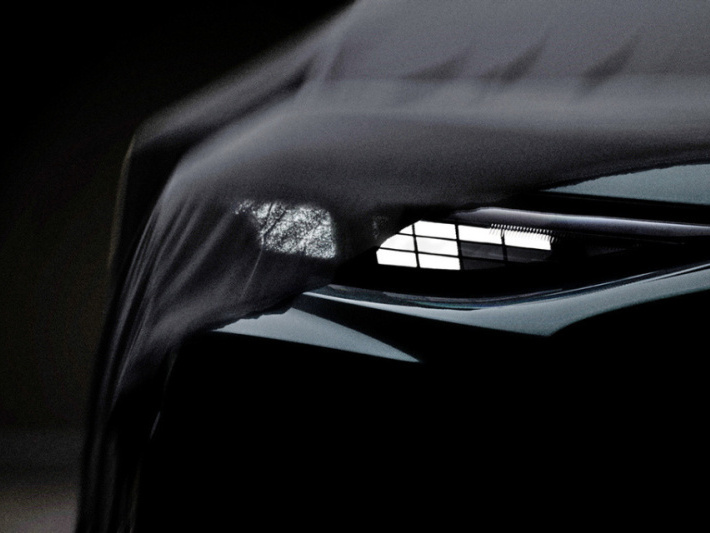
Beyond Expectations: All-New Audi Q3 Coming June 16
RobertJun 13, 2025
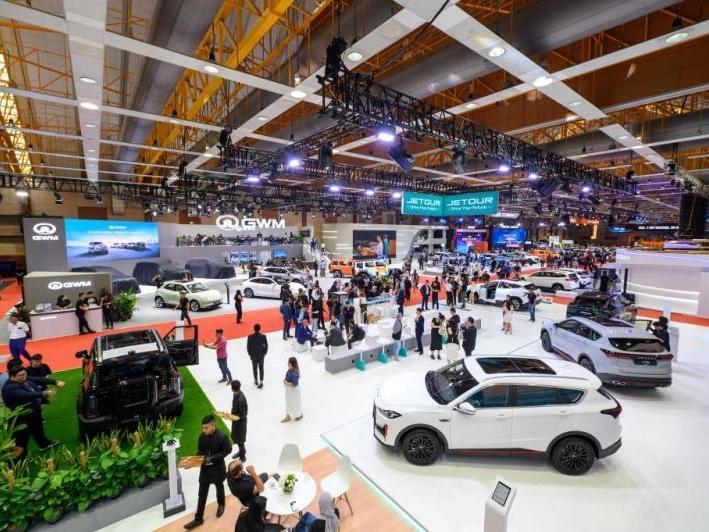
Summarizing the 2025 Malaysia Auto Show, a large number of new cars were launched in Malaysia this year.
MichaelMay 12, 2025
View More

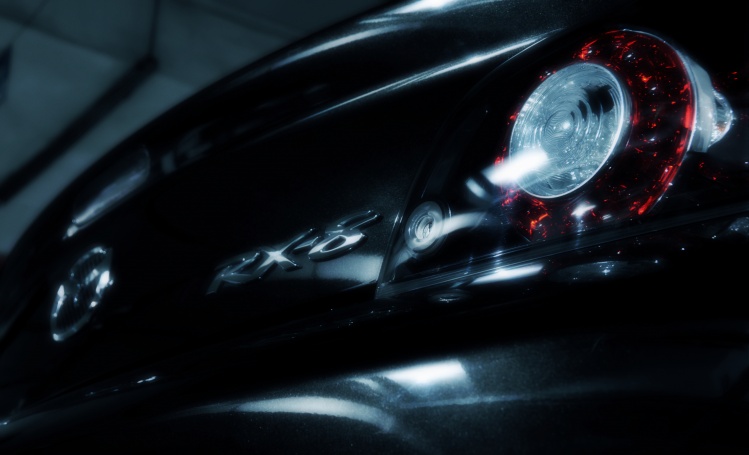
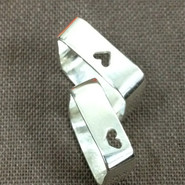









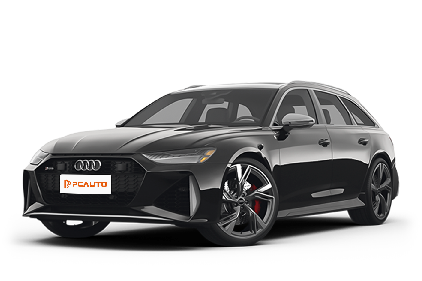





Pros
Cons